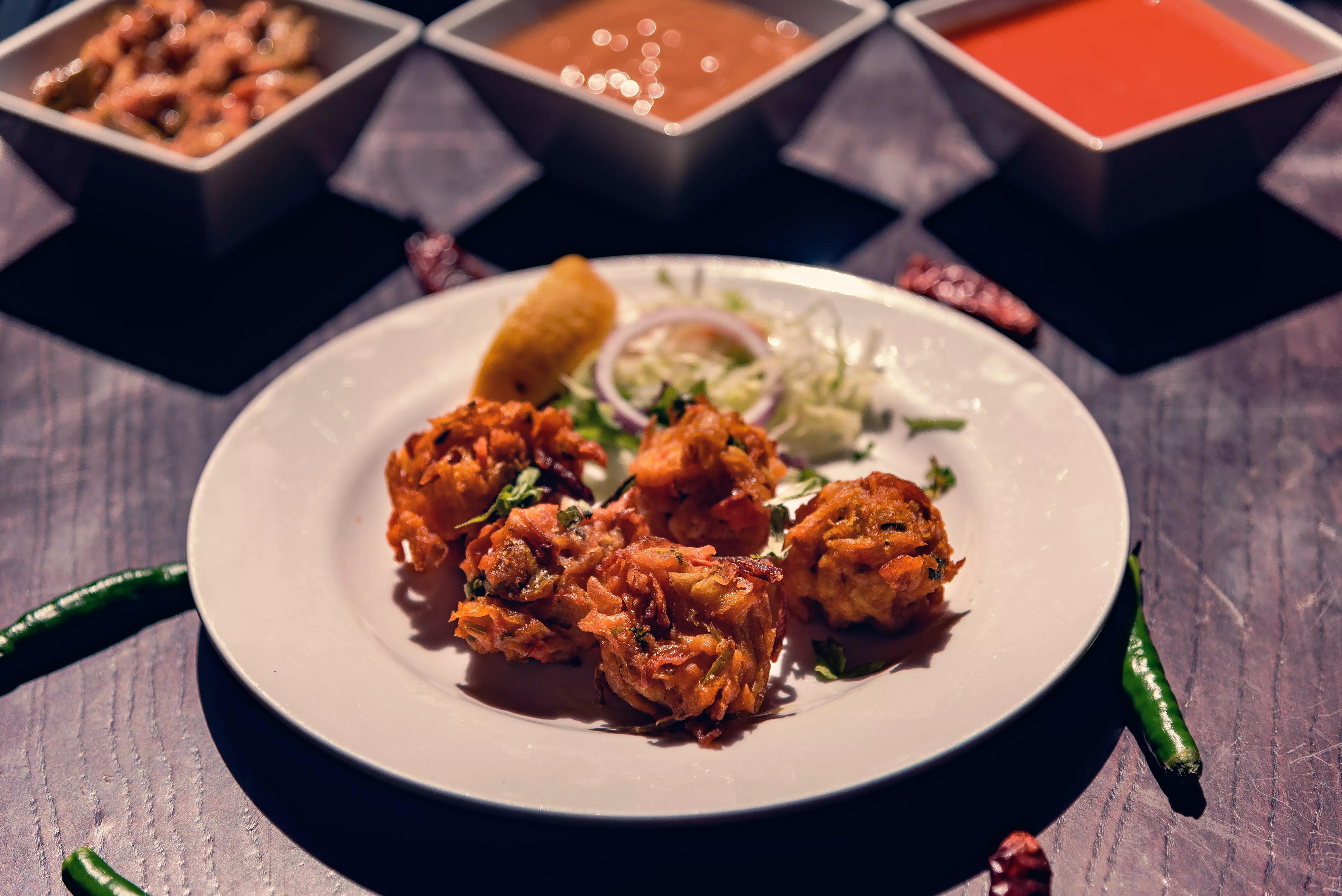Monsoon is here, and we are too with tips to make the perfect bhajiyas
Krish Ashok, author of The Masala Lab, walks us through the tips and tricks to prepare the perfect golden-brown fritters
- By Natasha KitturLoading...
- | 18 Jun 2022 10:00 AM IST
 X
X
No matter how far you've come in life, one plate of freshly fried bhajiyas, a hot cup of tea and the scenic view of the city as it pours, is the kind of setting that the heart yearns for. You can call it a bhajiya, fritter, pakora, chop or any other name, but the nostalgia and emotion it evokes in us simpletons is always the same. Now I can't speak for you, but in a perfect setting (as described in the beginning) all the elements that build it, need to be top notch as well. While we've mastered the many techniques of preparing various kinds of tea, we are now interested in the science that goes into making the perfect bhajiyas.
In talks with Krish Ashok, the author of The Masla Lab: The Science of Indian Cooking, we dive into the fundamentals, like picking the right flours down to the temperature of the oil for deep frying, to prepare that mind blowing batch of bhajiyas.
So check out these points you need to keep in mind to make the most mind-blowing bhajiyas, the ones that are just the right shade of golden-brown with the perfect crispy to soft ratio.
The beginning of it all—the batter
The first step in this whole process would be to prep the batter. And though mixing a bunch of masalas and flours may seem easy and unimportant at the outset, let's clarify that it is always the foundation that determines the integrity of the structure. No matter what bhajiyas you plan on making, make sure to introduce as little water as possible to the batter, as these fritters at some point will have to be deep fried. In Krish Ashok's words 'water is the enemy of deep-frying'. When it comes to making fritters like kanda bhaji, make sure to drain out the excess water before adding it to the batter.
The flours you use
Depending on the flours you use, your fritters will get a different texture. A pure gram flour fritter will be a different texture compared to one made out of refined wheat flour (maida). If you are looking for a combination of crispy and chewy, you'll want to mix gram flour and refined wheat flour to gain that texture. And if you want your bhajiyas to have a soft and crispy texture, go for a combination of gram flour and rice flour. Remember that the crispness of the bhajiya depends on the amount of rice flour added in the batter.
The wonders of soda
Always remember to add a pinch of baking soda, or a proportional amount, to the batter, for those perfect golden-brown bhajiyas and to give the fritters and airy and fluffy texture. A little baking soda helps accelerate the Maillard reaction (the process of browning in certain foods and lending them their distinct flavour) making sure that the bhaiyas are an even brown colour once deep fried. A little hack, you can also alternatively use a little bit of vodka to get the same results, plus make them a little crunchy.
It's time to deep fry
Once the batter is ready and you've made sure to drain the excess water of your veggies (if need be, as in the case of onion fritters), it's time to fry! Bhajiyas are deep fried and hence it is important to pick the right kind of oil. Firstly, keep in mind to avoid cold pressed oils (like coconut oil or sesame oil). The oil is required to boil at a high temperature and such oils may burn before even reaching the required temperature. Use refined oils instead. Refined oils tend to have a higher smoke point, making it possible to stay in the 170°-180° C range, as required for frying.
Making the perfect brown bhajiyas
Before you drop the batter in the oil to fry, remember that the ideal temperature range for the oil needs to be somewhere between 170°-180° C. A temperature any lower and your fritters won't cook evenly and any higher, the outer crust will burn before the inside gets cooked. However this isn't a hard and fast rule. Depending on the size of bhajiyas you will have to adjust the temperature. Large fritters, the likes of mirchi bhajiyas will need a lower temperature, somewhere between 150°-160° C whereas smaller fritters like kanda bhajiya, pakodas and the likes, will need a higher temperature.
Serve hot!
Now that we have our hot bhajiyas ready, it's only a matter of serving them. To keep the bhajiyas crispy and fresh, remember to drain off the excess oil from the fritters by lining them on a paper towel once deep fried. This will prevent the fritters from becoming soggy. And most definitely, remember to sprinkle the fritters with chaat masala (or a seasoning of your choice) when they are hot. The heat allows the easy absorption of the seasoning into the bhajiyas.
So now that you know the tips and tricks to making the perfect bhajiyas, when do you plan on trying them out in your kitchen?

Natasha Kittur
Natasha Kittur is an aspiring writer. Her love for anything with cheese and spice is profound, but a white sauce pasta always tops her list. In her free time you will catch her reading or watching crime books and shows or go on and on about psychological experiments and theories. She aims to write a book in the fictional genre someday.


